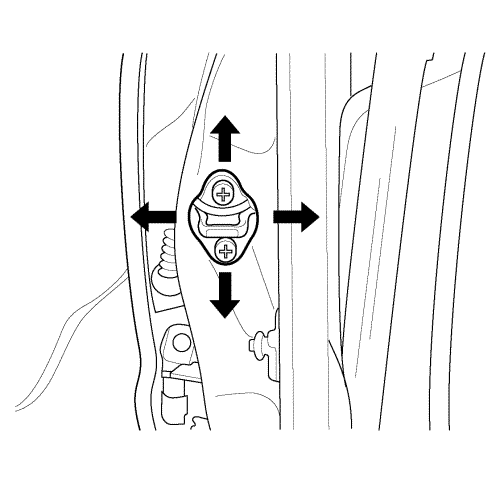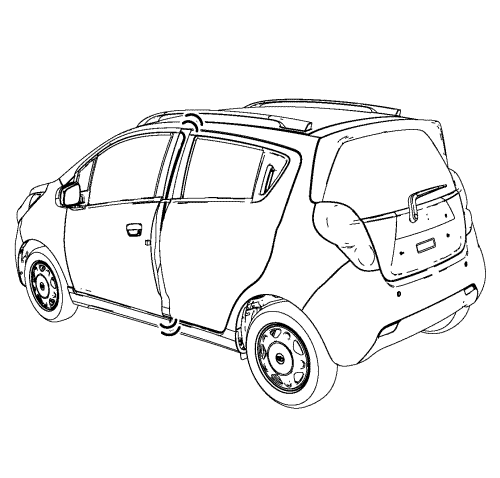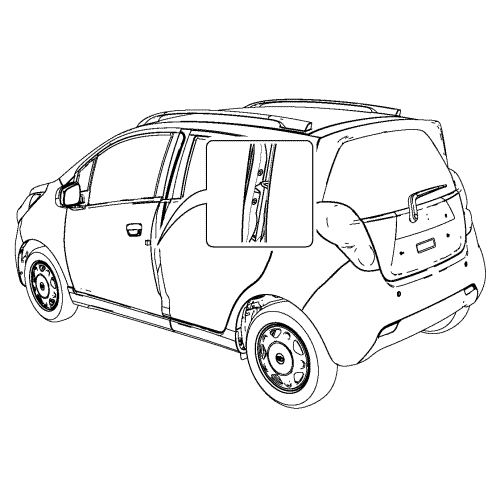Door Lock Striker Adjustment
Fore/Aft Adjustment

Caution: When replacing the door lock striker, only use the manufactures replacement part. Do not use a replacement part of a lesser quality or a substitute design. The use of a lesser quality part could lead to an improperly operating door retention system.
- The door must be properly aligned.

- Close the door until the lock fork contacts the striker.
- Stand next to the door opening and move the door slowly in and out, just touching the striker each time.

- The alignment of the lock fork and the striker can be easily seen. The lock fork should be perpendicular to and fall near the middle of the striker. The lock fork should fall near the middle of the striker between the upper/lower centre pillar and the end of the striker.

- If a fore or aft adjustment is required, use the following steps:
| 5.1. | Remove the striker screws . |
| 5.2. | Remove the spacer in order to move the striker toward the rear of the vehicle . |
| 5.3. | Add a 2 mm (0.08 in) spacer in order to move the striker toward the front of the vehicle. |
| 5.4. | Install the striker screws. |
- Perform the up/down or the in/out adjustment.
Up/Down or In/Out Adjustment
An adjustment of the striker in the up and down or in and out directions may be necessary for a number of reasons:
| • | Vehicle frame damage as the result of a collision |
| • | Installation of new door weather-stripping |
| • | Customer complaints of excessive wind noise |
| • | Difficulty in opening or closing the door |

In order to adjust the door striker in an up and down or in and out direction, perform the following procedure:
- The door must be properly aligned.
- Loosen the striker screws.
Caution: In order to oblong the striker mounting hole to assist in further striker adjustment, use a die grinder with a flat-headed grinding bit. This type of bit will help to prevent damage to the tapered floating cage plate. The striker and the tapped floating cage plate are important attaching parts that could affect operation of the door closing and latching systems.
- The floating cage plate can be moved slightly using the ends of the striker screws. Move the floating cage plate to the desired position.
- If proper adjustment requires that the floating cage plate be moved more than is possible, use an electric hand drill and a 9.5 mm (0.375 in) rotary file with a flat head in order to enlarge the body opening in the direction required.
- Tighten the striker screws to the correct position.
| © Copyright Chevrolet. All rights reserved |




